Much like everything else you do on social media as a brand, social listening requires a strategy. Whether it’s simple or more complex, your social listening strategy should outline the main action points when it comes to monitoring how people think and feel about your brand.
Having a clear game plan for your social media listening enables you to draw actionable insights from your findings and use them to improve your marketing campaigns, learn more about your audience, industry or even your competitors.
The trick is knowing where to start. So shall we take the first step?
Social listening strategy guidebook
1. How to get started with your social listening strategy
Before you start crafting your action plan for social listening, you need to ask yourself a few questions and set some things straight.
Being honest with yourself about what you want to achieve through social listening will go a long way and will save you a lot of time and doubts down the line.
Here’s a few things you should consider before creating a social listening strategy:
-
Set goals
This is a no-brainer, but it’s worth mentioning anyway because it’s essential to the process. Setting a number of (realistic) goals is the first step you should take once you’ve decided that you want to include social listening in your marketing efforts.
Start with a simple question: why does my brand need social listening?
Is it because you want to see how many people talk about your brand? Maybe you want to look deeper and see what emotions your content creates for your audience? Can it be because you want to be more hands-on with your customer care, or be the first to find out when a crisis erupts?
Maybe your brand needs social media listening as a method of generating new content ideas? Or, you want it because it’s a good way to get to know your audience more closely and create better user / buyer personas?
No matter what your reasoning is, you should know your desired outcome when you start creating a social listening strategy.
-
Find the right tools
If you have a small or young brand with a limited social media presence, you might get away with doing social listening manually.
But once you realize you have tens, hundreds, even thousands of posts to sift through and analyze, you might turn to a social listening tool like Keyhole, Brandwatch or Socialinsider.
-
Pick the channels you want to focus on
The good (and bad) news is that conversations about your brand and products can pop up anywhere on the internet, so it's a great idea to stay in the loop across different social platforms.
Start small, by focusing on the ones your current audience and customers love the most and are the most active o. In time, you can add more channels to your list and deepen your analysis.
-
Decide what to listen for
Different listening software will offer different ways to do social listening, and that's good.
Some will track mentions. Others, like Socialinsider, will focus on providing in-depth hashtag analytics data and insights. Depending on what your goal is for social listening, and what tools you have at your disposal, you can decide what to listen for.
You can choose one or more of the following: brand name, social media handles, brand hashtags, popular topics in your industry, product names and so on.
-
Track KPIs
Setting a goal is almost never enough. In order to know when you’ve reached your target, you need to select and measure some KPIs related to your goal.
There a few social listening metrics you can look to gauge the impact of your brand on social:
- Post volume - the number of posts that talk about your brand on social. You can track this (and so much more!) easily using a social media listening tool like Socialinsider- and see exactly how many of them come from content creators or influencers.
- Mentions - We can’t talk about social listening metrics without covering mentions. When someone directly mentions your brand on social media, it’s a clear sign they’re interested in what you do, say or sell.
- Sentiment - In the early days of social listening, knowing only the number of posts that mention or reference your brand was enough. But as time went on, it became more and more important to know how people feel about a particular brand - positively, negatively or anywhere in between.
That’s why sentiment analysis is now an essential part of social listening - as you can find out exactly how happy or dissatisfied people are with your brand.
- Engagement - Although not everyone sees engagement as a social listening metric, it definitely counts towards a deeper understanding of your audience, which is a primary goal of any social media listening strategy.
- Influencers - In this day and age, a lot of people put their faith in the opinions of online influencers, including when they’re deciding if a particular brand is worth their attention or not. In many instances, they will trust an influencer more than a Google review or client testimonials.
That being the case, it’s highly important that you track how many influencers are spreading the word about your brand and what exactly they are saying. In the best case scenario, you might even get some of these creators to collaborate with you on a specific project or campaigns, thus boosting your brand awareness and reputation.
2. How to master your social listening strategy with Socialinsider
The world of social listening is wide and full of opportunities. To maximize your chances of getting the insights you need, you should use a tool that allows you to listen for what matters most to you.
With Socialinsider, you can get in-depth data about any Instagram hashtag, including branded or campaign hashtags. You can find out how many people are talking about your brand, how they feel about it (sentiment analysis), how engaging their conversations are and much more.
To start, you only need to add a hashtag. It can be your branded hashtag (e.g. #pepsi) or a campaign hashtag (e.g. #betterwithpepsi) or any other hashtag you find relevant for your search.
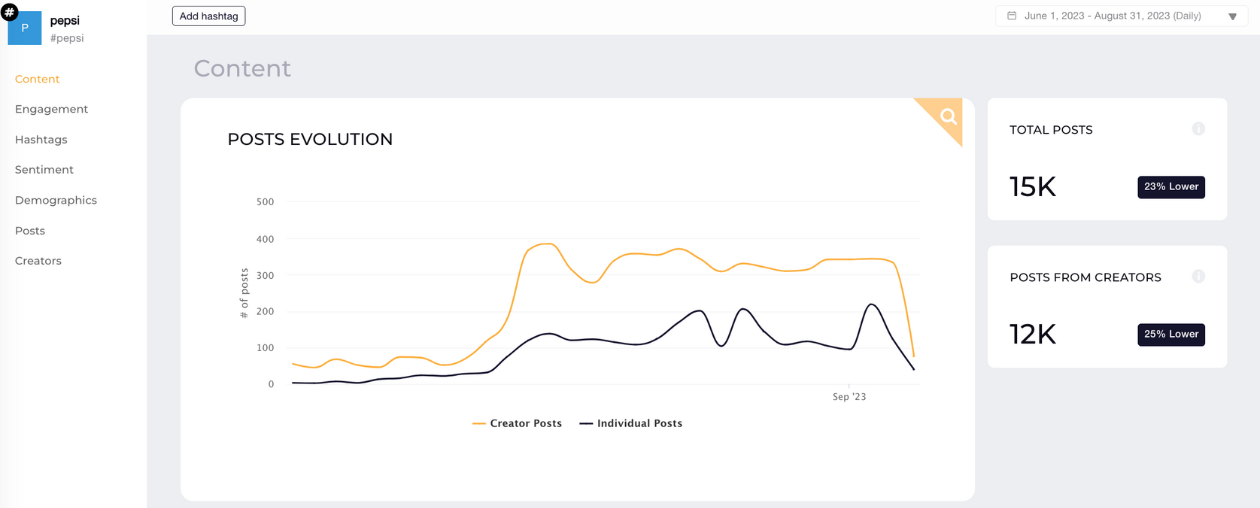
Doing this will bring you into the Content section, where you can see how many posts with that hashtag have been shared in the time range you selected. We highlight the number of posts that come from creators because they are usually your most powerful (unofficial) brand advocates.
In this section you can also find data about best posting times, as well as the most common post types and top topics for your branded posts.
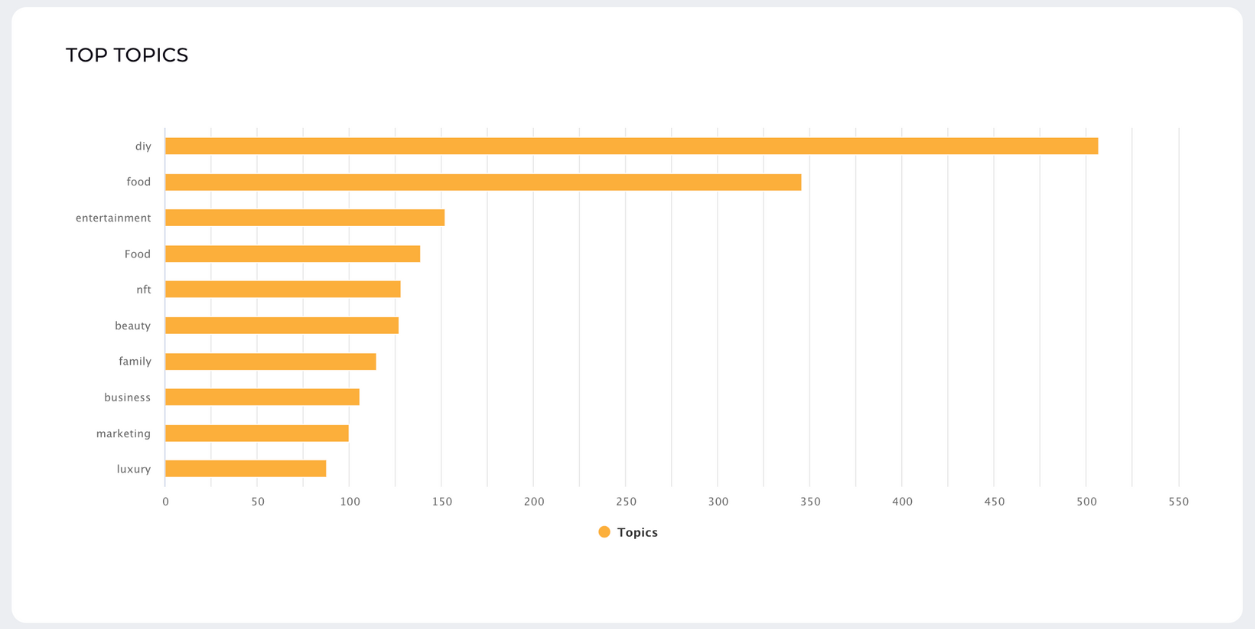
If you’re wondering how much engagement these posts are generating, you can find out by heading to Engagement:
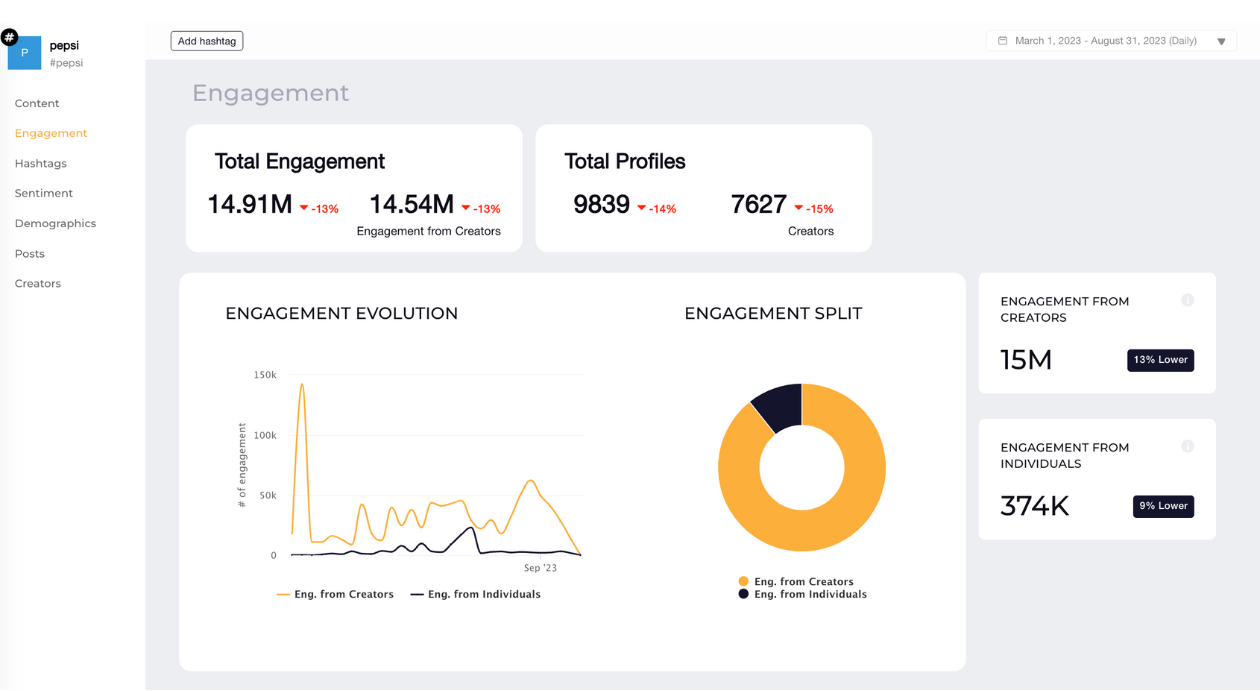
The Hashtags tab gives you a bit more context for your hashtag of choice. Seeing all these related hashtags can help you understand your audience’s interests and conversations more, and they might even serve as inspiration for new content or product ideas:
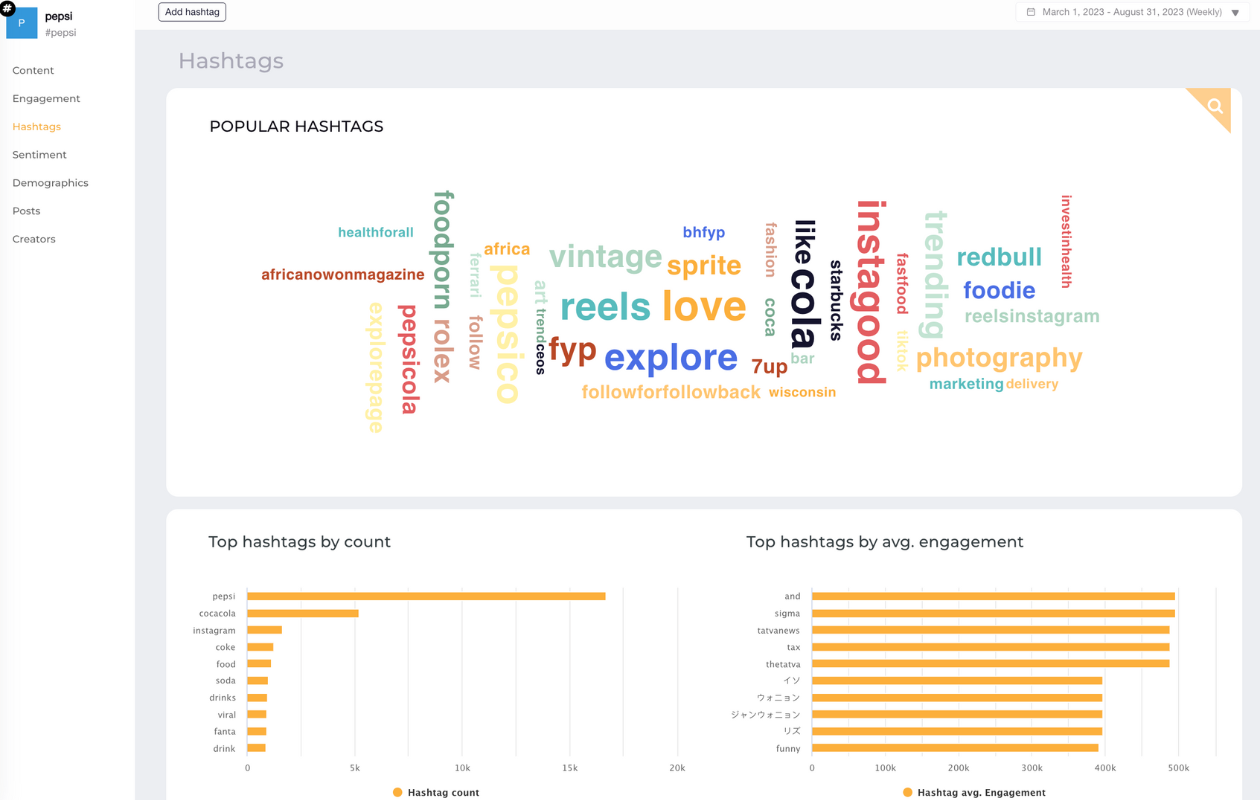
The Sentiment section is where the real social listening fun begins.
Here you can find all sorts of AI-powered insights, discover how people feel about your brand (positively, negatively or neutral) and even what emotions your product and brand awakes in them.
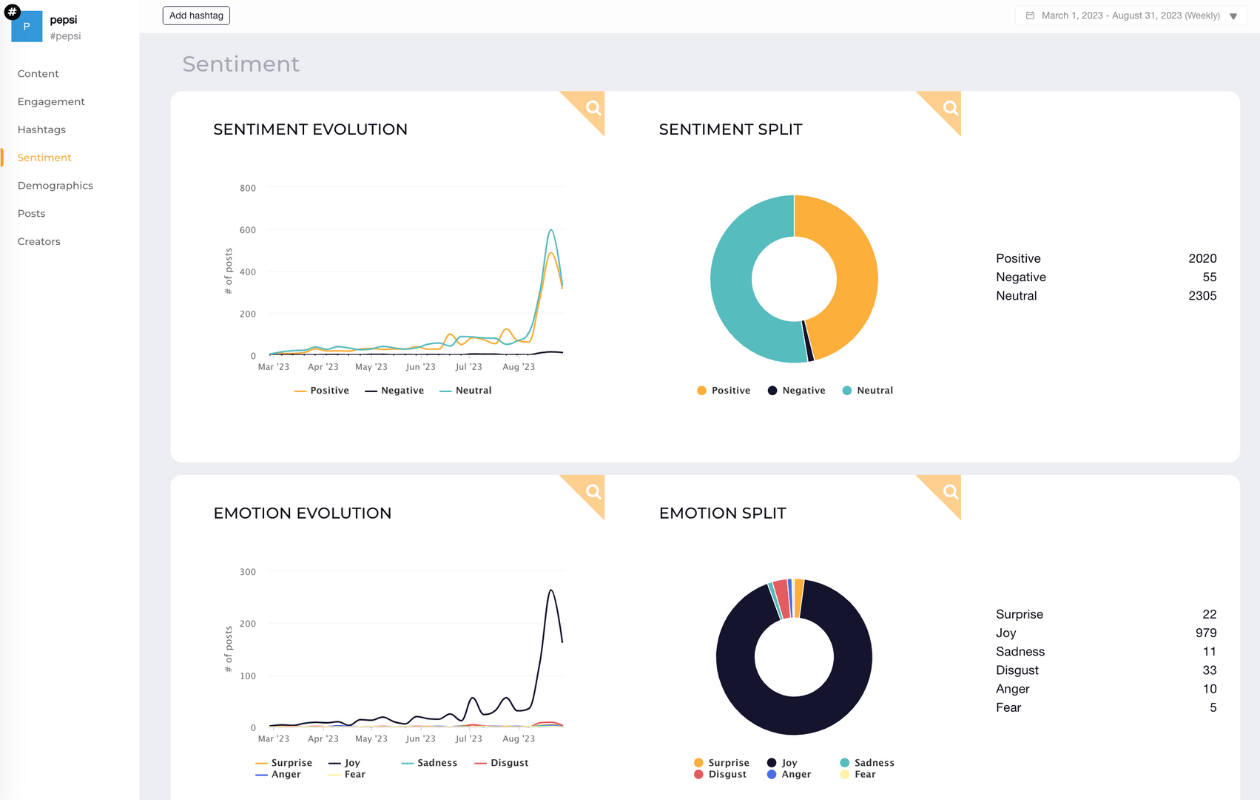
You can check the Demographics tab for more details about your audience, and then Posts tab for a full list of the posts that included your hashtag.
Finally, in the Creators section you can find the top creators that talk about your brand using the hashtag you searched for.
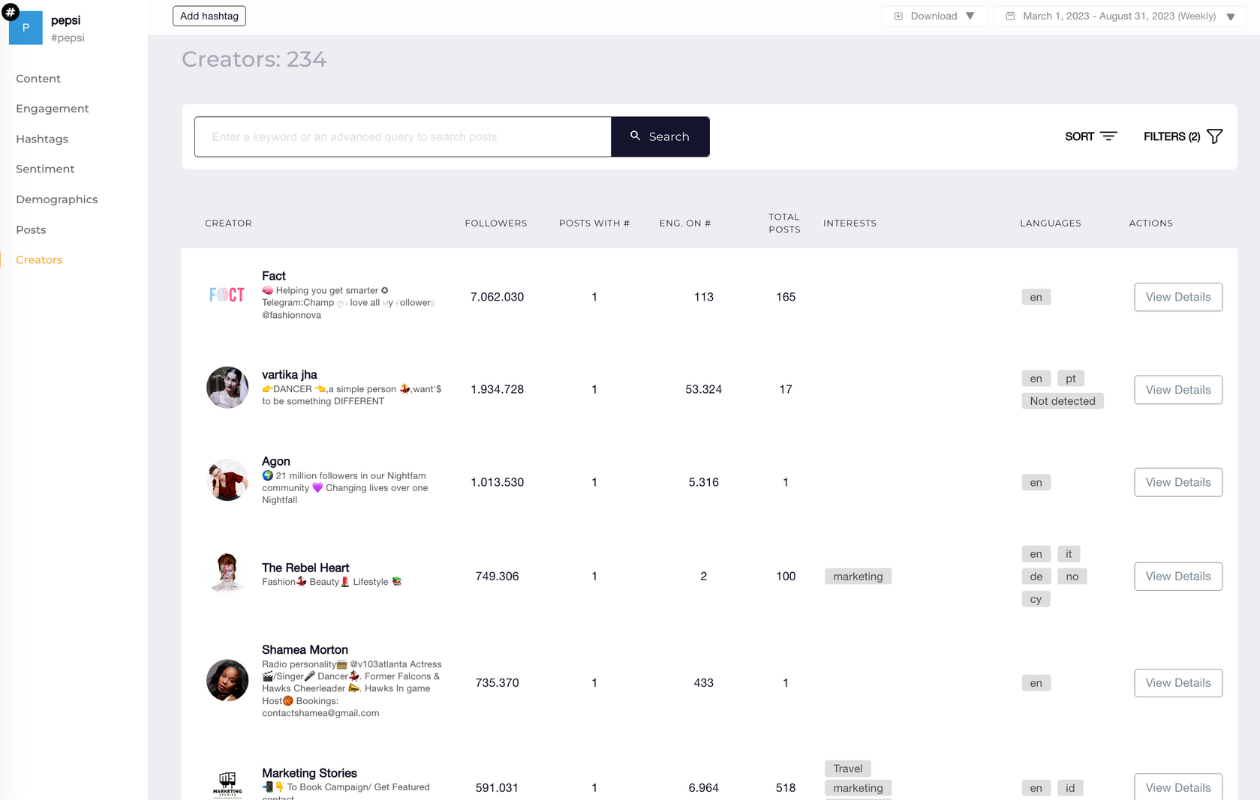
There may be tons of posts associated with that hashtag so don’t hesitate to filter or sort the list as you see fit. In my case, I filtered the list to only show Creators that have more than 10,000 followers and have shared posts in English.
These filters can substantially narrow down your search and help you find key social media customers that are already highly engaged and invested in your brand.
3. 8 key steps to take when building a strong social listening strategy
Once you’re done laying the groundwork for your social listening plan, it’s time to start strategizing!
Here are 8 essential steps in any social listening strategy:
1. Look beyond direct brand mentions.
Simply looking at brand mentions is the easy way out when monitoring what people think about a brand. An important part of any social listening strategy is to go beyond traditional metrics and get a deeper understanding of your brand’s reputation by looking at metrics such as emotion, influencer share of voice, etc.
2. Mitigate crises before they escalate.
The internet is large and small crises might break out when you least expect it. Use social listening to monitor your brand reputation, and put out fires before they grow too big and affect your brand’s image.
3. Find brand advocates within your community.
Listening on social media creates a great opportunity for you to find people that are already so interested in or even passionate about your brand, that they would make excellent brand advocates. If these people are influencers with a sizable audience, all the more reason to keep an eye out for this type of users or customers.
4. Create accurate buyer personas.
People unestimate the power of buyer personas, yet they are essential in creating the most powerful tailored marketing strategies. Social listening helps you understand your audience to the point where you can speak their language, and that will pave the way to the perfect buyer persona.
5. Monitor your competition alongside your own brand.
As part of your social listening strategy, you should focus on your brand’s image, but you should not disregard your competition. While you cannot get the same listening insights for other brands as you do for your own business, it’s still worth monitoring their performance and overall reputation and use it as a benchmark.
6. Engage with people that don't mention your brand directly.
The best part about social listening is that there are many ways of finding out how people feel about your brand, even if they don’t mention it directly in their posts, comments or reviews.
7. Identify top voices in your niche or industry.
Every industry or niche has their top voices, the ones whose message sounds louder and reaches more people. By keeping your ear close to the ground, you can discover who these individuals are, and get in touch with them to see if there's a chance for a future collaboration.
8. Measure social campaigns performance.
Studying your past social campaigns' performance can offer you plenty of insights about what works and what doesn't. Through social listening, you can keep an eye on specific campaign hashtags (your or your competitors') and see how big of an impact they have over time.
Final thoughts
Building a framework for social listening can feel quite intimidating and challenging. But knowing how to get started and what steps to take to make sure you’re crafting a solid strategy – this will help you leverage social listening to improve and expand your business and connect with your audience more authentically.
Frequently Asked Questions
1. How can social listening impact your social media strategy?
Social listening can greatly improve your social media strategy by adding a new layer of audience insights and product feedback, as well as providing a pool of highly engaged customers that could be turned into brand advocates.
2. What are the main limitations of social listening?
Social listening, for all its benefits, also has some limitations, such as the need for extensive filtering and cleanup (due to the massive amounts of raw data), occasional lack of context, etc.
3. What is the purpose of a social listening strategy?
A social listening strategy has the purpose of guiding you through all the steps needed to monitor your brand’s reputation on social media, gauge your audience’s sentiment towards your brand and find new brand advocates.
4. What is an example of brands doing social listening?
A good example of brands doing social listening would be Taco Bell. They are very active on social media and known for engaging with their customers in real-time and reaching out to them via social networks.








![[STUDY] Social Media Data for the Beauty Industry: Top-Notch Instagram Listening Insights](/blog/content/images/size/w1000/2023/10/beauty-industry---instagram-listening-study.png)
